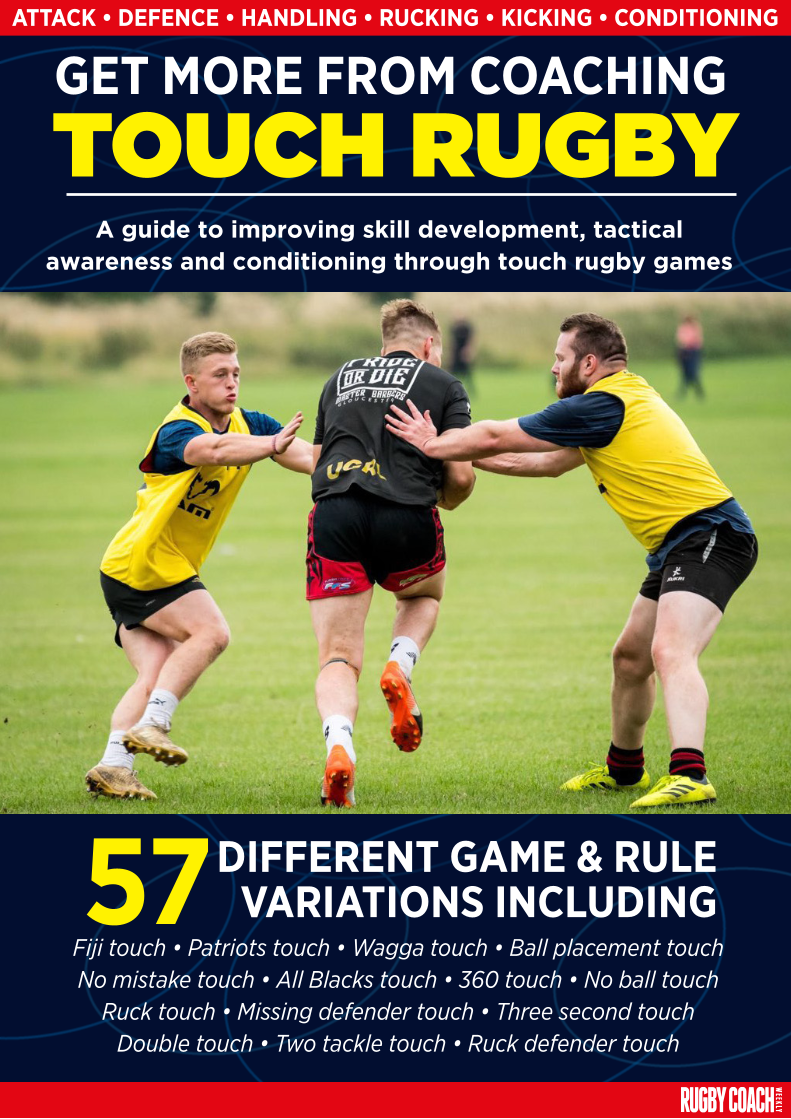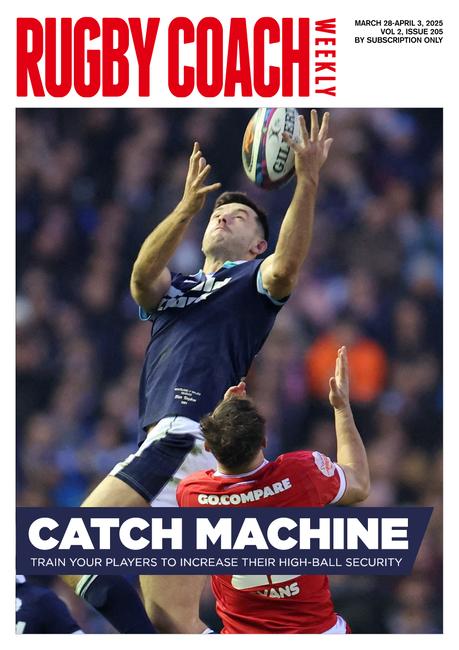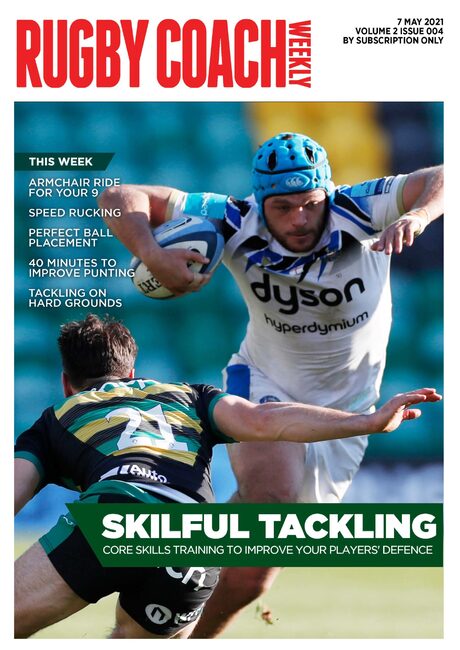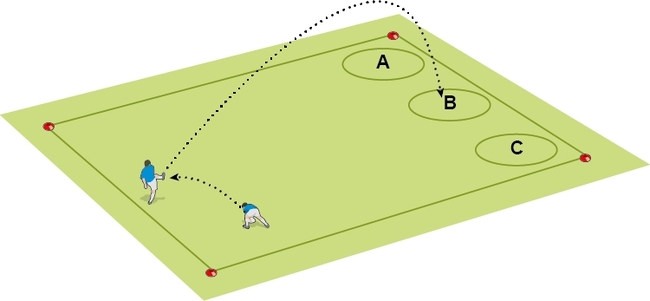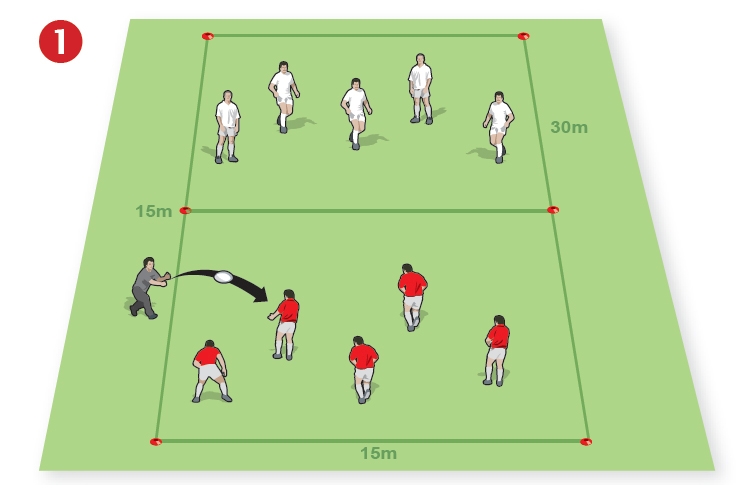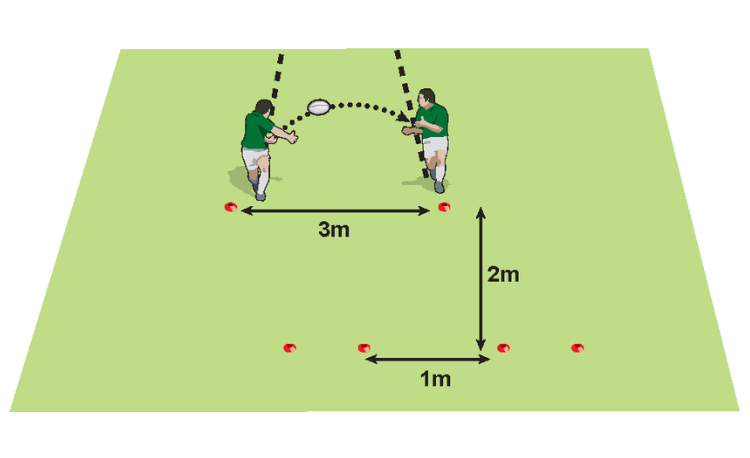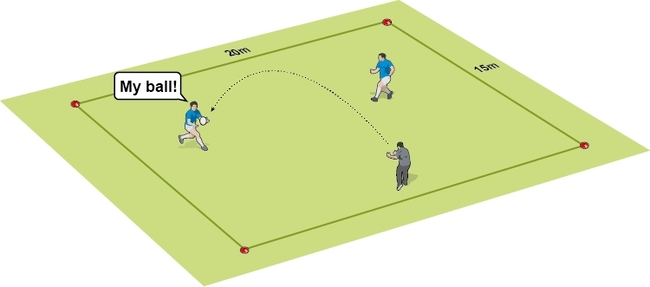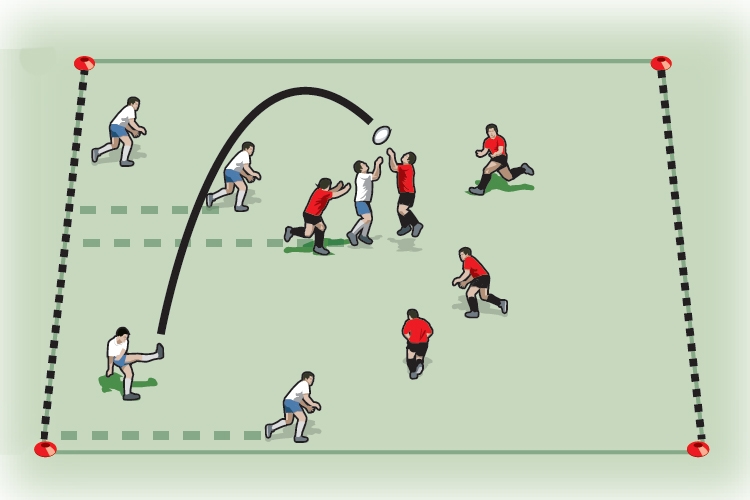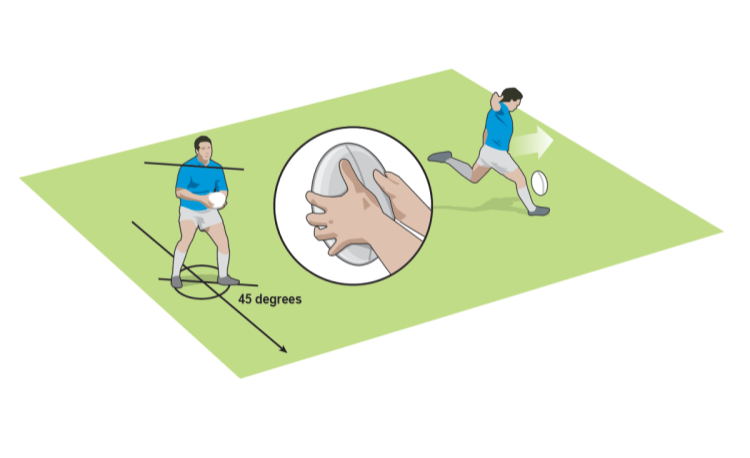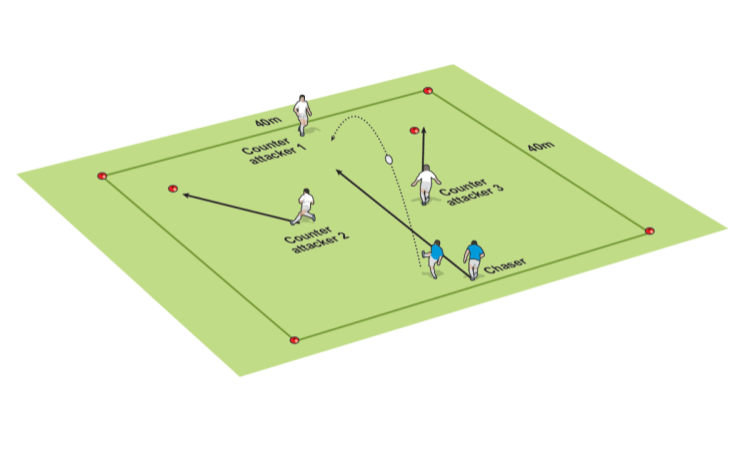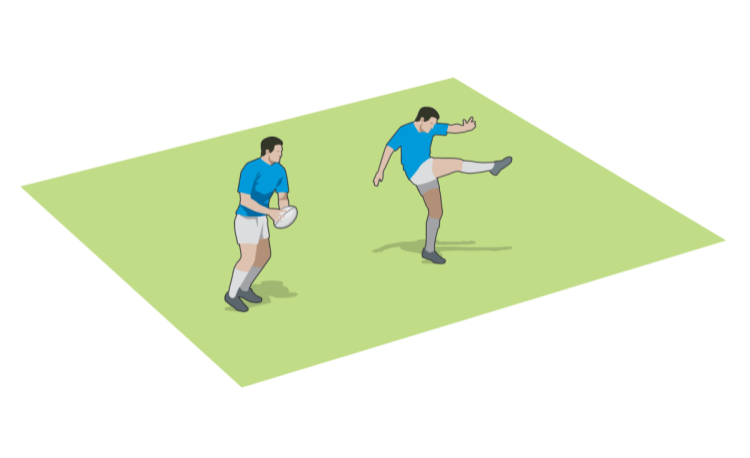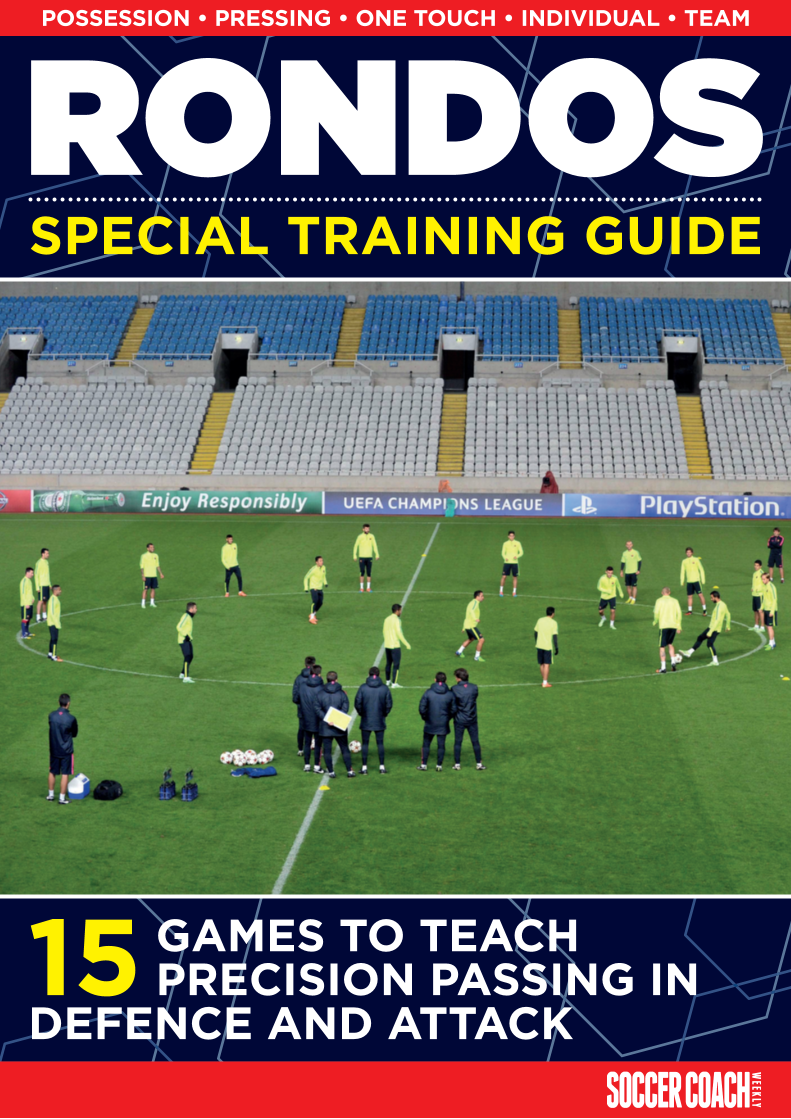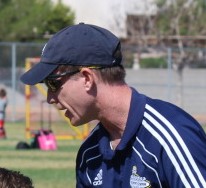Airtight catchers
If high-ball receivers can get off the ground to catch, they won’t be smashed backwards by opposition chasers. Develop skills and timing with this session.
WHY USE IT
Establishes confidence in an open and closed environment, while demonstrating the correct technical approach to challenge for the aerial ball and, if necessary, jump to catch.
set up
Halfway line to 22m. One ball per group of three/four.
HOW TO PLAY
Closed environment: In groups of three, the ball is kicked high to a receiver 15m away. One kicks, one receives, one waits.
Open environment: Extend the distance and height of the kick. One player kicks, one chases and one receives. The chaser causes a distraction, but no contact is to be made. Encourage a ‘T’ shape with the body and ‘cradle’ with the hands when making the catch (see top illustration, inset). Playing 2v2, expand the distance for the aerial kick, with receivers behind the 22m line. The receiver is defined by where the kick is directed to, and the chaser is encouraged to challenge for the ball. The two receivers must communicate who is challenging to receive and who is supporting.
coaching points
- ‘T’ shape and ‘cradle’.
- ‘T’ shape encourages a body shape that spills the ball backwards and not forward.
- ‘Cradle’ encourages safe pouching of the ball.

- The catcher comes forward, forms a ‘cradle’ with their arms (elbows in), jumps towards the ball and gathers it into their chest

- They form a ‘T shape’ to take the catch. Their chest is facing sideways, with their lead hand towards the ball. If they can’t make a clean catch, the ball will go backwards
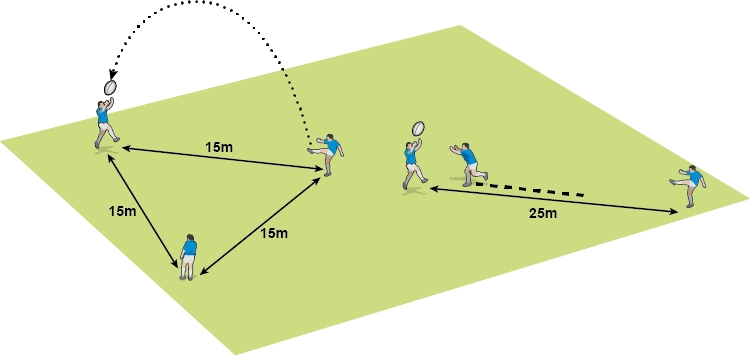
- Start with three players kicking to each other to practise the ‘cradle’ and ‘T’ shape (closed environment)
- Then have one player kick, one catch and the other chase to put non-contact pressure on the catcher (open environment)

- One kicker punts the ball towards the 22, with a chaser coming forward to pressurise the receiver
- One of the two receivers comes forward to catch with the other one acting as a support player
Related Files
Newsletter Sign Up
Coaches Testimonials
Subscribe Today
Be a more effective, more successful rugby coach
In a recent survey 89% of subscribers said Rugby Coach Weekly makes them more confident, 91% said Rugby Coach Weekly makes them a more effective coach and 93% said Rugby Coach Weekly makes them more inspired.
Get Weekly Inspiration
All the latest techniques and approaches
Rugby Coach Weekly offers proven and easy to use rugby drills, coaching sessions, practice plans, small-sided games, warm-ups, training tips and advice.
We've been at the cutting edge of rugby coaching since we launched in 2005, creating resources for the grassroots youth coach, following best practice from around the world and insights from the professional game.

